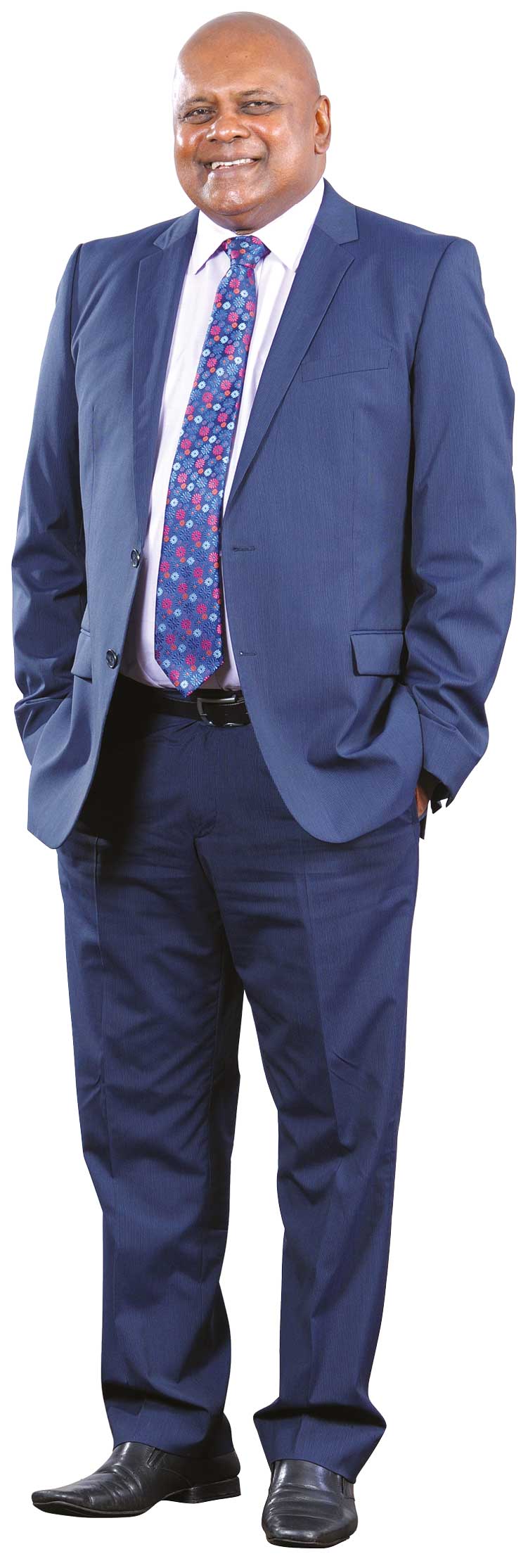DYNAMISM
Thriving traits
Ajith Gunawardena
In times of economic upheaval and market pressures, staying on course and thriving in uncertain environments amid chaos is a commendable achievement. But only truly dynamic organisations can aspire to achieve this ideal.
Ajith Gunawardena is of the firm belief that there are clear markers to determining the dynamism of an organisation.
He explains: “In order to be admired as a dynamic organisation, first one must walk the talk by demonstrating innovation of products and services, displaying social and environmental consciousness, fulfilling ethical obligations and driving a vibrant workplace which employees are happy to come to every morning.”
Dynamism is an intrinsic part of growth, Gunawardena asserts, whether it applies to an organisation or a nation. He muses: “In order to be dynamic as a nation, the right people must be placed in the right positions irrespective of political affiliations while keeping politics separate from policy making. A dynamic nation for example, will review and amend legislation regularly in response to current requirements.”
Corporate dynamism, in his view, is to know when to invest and when to exit. The speed of change and innovation is another characteristic of a dynamic entity. Dynamism must be inculcated by encouraging employees to embrace change, have strong work ethics, display integrity, and be open to learning and creative problem solving, he opines.
And he believes that dynamism cannot occur in a vacuum; it requires a culture that promotes independent and creative thinking with a sharp focus on innovation – characteristics that should be systemic in the organisation for long-term success. Creating fresh experiences for customers and entering new markets is yet another way in which dynamic organisations operate.
While Gunawardena believes this trait of dynamism should be a top-down approach, it has also to be inbuilt in the organisation’s soul. Dynamism does not always mean rapid growth. Slow and steady can also win the race.
Although the external perception of a company may be of it being a dynamic entity, how often is that found to be a misconception when dealing with the business in reality? He feels that this is a problem faced by most companies.
“Service levels are not consistent from person to person, or from place to place. When an organisation grows, this issue could become even more crucial, requiring close monitoring and consistency of processes throughout service delivery,” he emphasises.
Dynamism in organisations helps build loyalty, creates competitive advantages and attracts high calibre employees. He adds that all employees should be treated equitably with no favouritism and that fair play should be practised at all times.
A dynamic organisation is also one that will take disruption in its stride, and Gunawardena believes it’s important to ascertain why organisations choose to stop growing to avoid particular pitfalls.
On what it takes to sustain dynamism, he responds: “Organisations must nurture a culture that is conducive to review and improvement, which encourages new ideas and rewards success.”
“The future definitely belongs to dynamic organisations that are agile, responsive and fast to adapt in order to remain relevant. Besides having the right processes in place, dynamism is a trait that must be inculcated across the team; it has to be an attitude and an approach that is instinctive,” he adds.
In conclusion, Gunawardena says: “Customer loyalty is great; but customers are also looking for innovation and novel experiences, so it’s important to have ideas, products and services in the pipeline. Creating rewarding customer journeys is critical for sustained growth; but parallel to these efforts and investments, new products and markets must also be constantly developed.”





